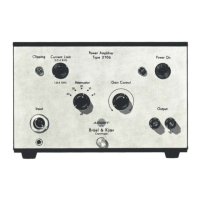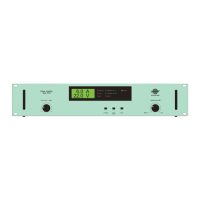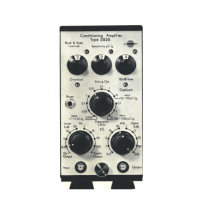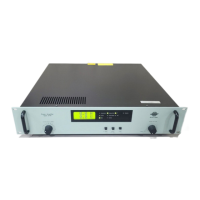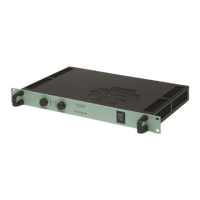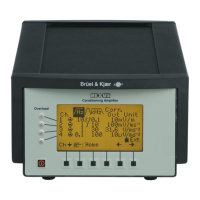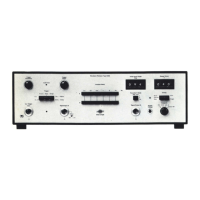Measuring Ampifier Type 2525
User Manual Vol.1
5–3
BE1406–12
Chapter 5 –The Measurement Set-up Menu
Transducer Sensitivity
ACCELERATION* No integration on the acceleration signal.
VELOCITY The signal is integrated once to provide the velocity
signal. Use to obtain the instantaneous vibration veloc-
ity magnitude.
DISPLACEMENT Double integration of the acceleration signal.
In order to increase the signal-to-noise ratio of the measuring instruments in the
vibration measurement chain you might want to use the parameter which yields
the flattest frequency spectrum. For broad-band (wide frequency content) measure-
ments on rotating machines, the velocity parameter is found to be the best in 70%
of all cases; acceleration in 30%. Displacement parameters are sometimes used for
measurements of low frequency and large displacement vibrations often encoun-
tered on structures such as ships, buildings, bridges and heavy machinery.
Note: When complex signals such as shocks and impulses are measured, velocity
and displacement parameters should not be used as they introduce phase errors
resulting in serious amplitude measurement errors.
If you are using a force transducer, select:
FORCE TRANSDUCER
5.3 Transducer Sensitivity
This menu allows you to enter the transducer sensitivity as shown on its calibration
chart. Press or on the amplifier’s front panel to increase or decrease the
value. Pressing down continuously on either pushkey acts like a “speeder” and caus-
es the values to scroll much more quickly.
The following rules apply to the specification of the sensitivity value:
Range: 1.00E–04 to 1.00E+4 pC/ms
–2
Default: 1.00E+00 pC/ms
–2
5.4 Input Type
This menu allows you to select the type of input you will be using on the amplifier.
The options are:
DELTATRON This input is designed for the DeltaTron
family of
transducers. These are transducers with built-in
preamplifiers.
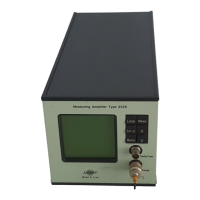
